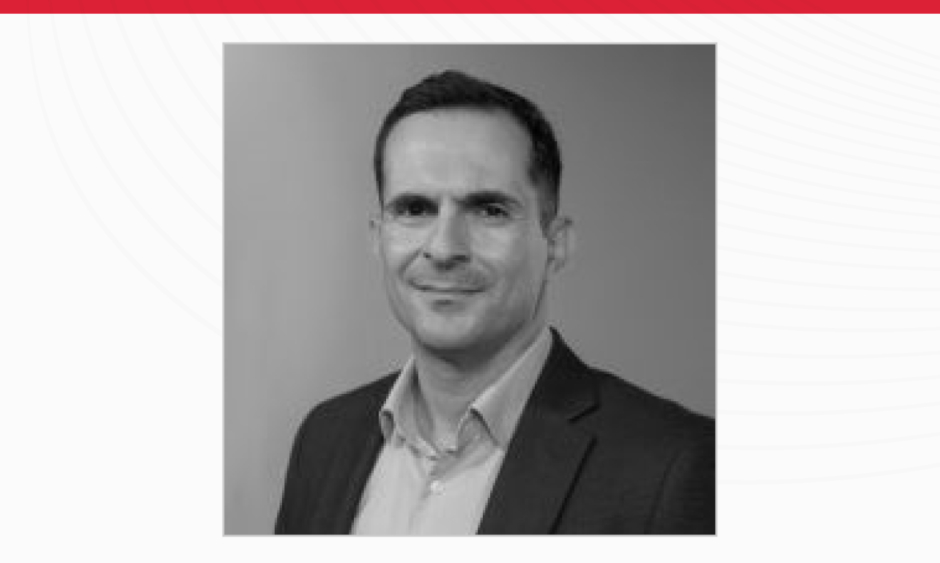Ioannis Sfontouris | Director of Embryology at Mitera/Hygeia IVF Athens, Greece; Honorary Assistant Professor in Clinical Embryology, University of Nottingham, UK; Co-ordinator, Special Interest Group (SIG) Embryology, European Society of Human Reproduction and Embryology (ESHRE).
![]()
Your education and professional experiences have involved you travelling to destinations such as Greece and the UK. Where do you believe you gained the most experience and do you believe travelling was integral for you to make it to where you are today?
I studied Biology at the University of Patras in Greece. Subsequently, I went to the University of Nottingham, UK, where I obtained an MMedSci in assisted reproduction technology and a PhD in reproductive physiology. Being born and raised in Athens, this meant I had to leave home from an early age to pursue my studies. Everyone will confirm that being a student away from home gives an unimaginable sense of freedom but also enforces responsibility and focus on your target. I feel that studying in Greece and the UK offered me invaluable experiences. I had the chance to experience two different educational systems, meet people who played key roles in my scientific development, make friendships that last even today, and was fortunate to be in the right place at the right time to take advantage of opportunities that determined my career. I believe that mobility of students and scientific staff between institutions and countries is very important for the exchange of ideas, personal and professional development, and scientific progress in general.
With 20 years of experience in the field of reproductive health, what initially sparked your interest to pursue a career in this discipline?
I decided to follow the field of assisted reproduction and clinical embryology at the final year of my biology degree in 1998. Even then, in vitro fertilisation (IVF) was a fascinating field, still at initial stages with an extremely promising growth trajectory. Intracytoplasmic sperm injection was already a routine practice, and at the time we were trying to optimise our culture systems to grow viable blastocysts. I am still amazed with the pace that IVF is progressing, both in terms of scientific discoveries and technology. This is a very exciting time to be an embryologist.
Your research focus has mainly been on the optimisation of embryo culture systems, non-invasive embryo quality assessment, and aspects of reproductive endocrinology. Are there any innovations on the horizon in embryology that you think are particularly noteworthy?
We are still waiting for the next best thing to revolutionise assisted reproductive technology after the introduction of intracytoplasmic sperm injection in 1992. I do not think this has happened yet, but we have several new promising technologies such as time-lapse technology (TLT), automation, and artificial intelligence, which are expected to improve workflow, increase consistency, and save time. However, it is very important not to be hasty and not get carried away by the hype created around various technologies. It is crucial to validate innovations and implement them in the lab after sufficient evidence confirms efficiency and safety.
What does your role as Co-ordinator Special Interest Group (SIG) Embryology for the European Society of Human Reproduction and Embryology (ESHRE) community entail, and what has been your proudest achievement in this position so far?
The SIG Embryology is the largest special interest group of the ESHRE. We should not forget that embryology is central to the founding vision Bob Edwards had for the ESHRE and it is, therefore, included in the very name of the society itself. Therefore, expectations are high for the SIG Embryology to always deliver exceptional educational activities, publish recommendations for good clinical practice, promote clinical embryology, and set the example for educational and scientific excellence. I would like to sincerely thank my friends, colleagues, and exceptional scientists at the SIG Embryology steering committee, Giovanni Coticchio, Debbie Montjean, Gemma Arroyo Cardona, Agnieszka Nowak, Roger Sturmey, and Dean Morbeck, for their invaluable contribution and constant support. We collectively managed to steer our SIG through the unprecedented period of the pandemic. My proudest achievement is, therefore, being a member of this exceptional team.
The main aim of the ESHRE society is to “promote interest in, and understanding of, reproductive biology and medicine.” Could you expand on the ways in which the society at large aims to empower patients and create a dialogue aimed at optimal healthcare benefits in reproductive health?
Although the ESHRE is mainly a society addressed to scientists and clinicians involved in the field of reproduction, it has a central mission to educate the public and raise awareness regarding matters of fertility. The ESHRE has established a close collaboration with Fertility Europe, a European organisation representing patient associations in the field of (in)fertility in more than 20 European countries. Of note, the ESHRE has generously given Fertility Europe a dedicated session in the main programme of the 2021 Annual Meeting.
This year’s ESHRE meeting was carried out online. What do you believe to be the advantages and disadvantages of a virtual congress?
The ESHRE Annual meeting of 2021, similarly to 2020, was held virtually, without physical presence. It was essential for the ESHRE, as the leading scientific society in reproductive medicine, to adjust to the current pandemic, but at the same time continue to offer our educational activities at the same quality level. The ESHRE 2020 meeting was the first ever reproductive meeting of such magnitude to be delivered online, which, despite some initial technical challenges, proved to be a success. The ESHRE 2021 was based on the experience of the previous year, and was held over a longer period, without the restrictions of physical conferences. Virtual congresses have pros and cons, although everyone misses the physical interaction that cannot be replicated on a virtual platform. We envisage to deliver hybrid congresses in the future, which will consist of both physical and virtual attendance.
One of your interests include using TLT in an IVF laboratory. Could you tell us the current stage that this research is in and when we can expect to be seeing it used in the clinic?
TLT is an important innovation that has changed the workflow in the IVF lab and has offered us new insights into biological events that were previously unknown to us. TLT has been increasingly introduced to IVF labs worldwide. It can prove to be a valuable tool primarily for clinical purposes (i.e., embryo culture and evaluation), but also for research, training, and quality control. According to a recent Cochrane review, TLT has not yet managed to prove a clinical benefit compared to conventional incubation. However, it is expected that better-designed randomised clinical trials may be able to provide more concrete evidence on whether TLT can significantly increase live birth rates. There is a variety of different TLT systems, with various technical characteristics. The recent recommendation paper from the SIG Embryology can definitely be a useful guide for the selection, implementation, and use of TLT in the IVF laboratory.
In your opinion, what have been the landmark in reproductive health and embryology trials so far in 2021 and how could COVID-19 shape the course of subsequent research?
We are still halfway through the year, so I cannot comment on any landmark studies yet. However, high-impact journals like Human Reproduction usually publicise a selection of the most popular papers published in a given year.
Certainly, the COVID-19 pandemic has been a major drawback in all areas of research, including reproductive medicine. Research labs around the globe had to pause their operation for extended periods of time, and staff had to work from home. Also, most of the funding and resources are now allocated to COVID-19-related research and testing, leaving fewer grants available for research in reproduction. The same goes for consumables; plasticware such as IVF-test dishes, tubes, pipette tips, etc. have become extremely difficult to find in recent months. We can only hope that the implementation of successful vaccination programmes will help to contain and limit the pandemic, so we can go back to a sense of normality in all sectors of life soon.
Finally, what advice would you give to young healthcare professionals pursuing a career in this discipline? Where do you hope they will take the field of reproductive medicine and embryology over the coming decades?
Clinical embryology is a fascinating discipline, and it is both challenging and rewarding. It is a field with fast development, scientific breakthroughs, and innovative technologies. Hard work and persistence are key to a successful career in embryology. Certainly, sound knowledge of the principles of reproductive biology, improvement of technical skills, and attention to detail are essential to perform the tasks of a clinical embryologist. We are all eager to witness what the future holds for reproductive medicine and embryology. It is likely that technological advances, automation, and artificial intelligence may become routine tools in the IVF lab of the future. However, the correct scientific method and clinical evidence should always be used to evaluate new technologies and interventions in order to offer the best treatment to our patients.








